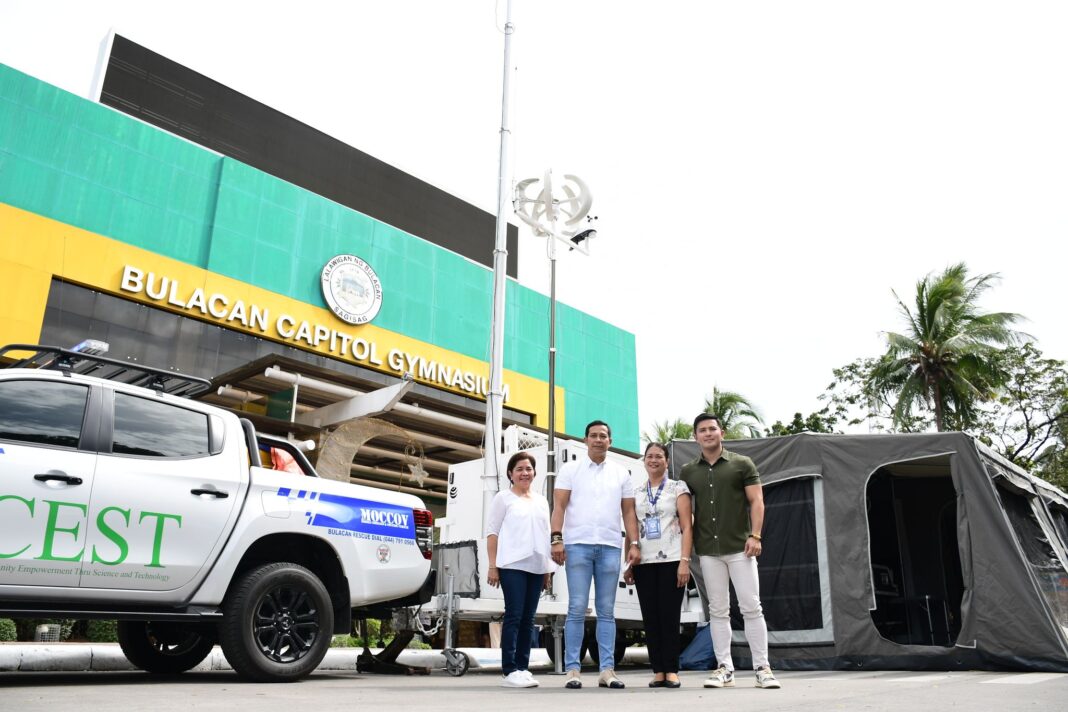
CITY OF MALOLOS –A P16.8 million worth of state of the art disaster mobile disaster response facility Mobile Command and Control Vehicle (MOCCOV) was given to Bulacan early this week as part of disaster preparedness of the province.
The Department of Science and Technology (DOST) provided the equipment for the Bulacan Rescue Command of the Bulacan Provincial Disaster Risk Reduction Management Office (PDRRMO).
MOCCOV is a mobile facility that can be used to plan, direct, coordinate, and control material and manpower resources in times of emergency. It is equipped with various capabilities for emergency situations to exercise contingency and response plans and has its own weather station system, drone, satellite phone, and other communication and surveillance equipment. In times of rescue operations, the technology has included triage with available rescue equipment and medical apparatuses.
DOST Bulacan Regional Director Angelita Parungao said the equipment will strengthen the local disaster preparedness and post-pandemic recovery capacities of Bulacan.
“We are very thankful for this facility given to us because this technology could immediately be set-up at any place or calamity area it is required. It will serve as a command center and a triaging trailer tent”, Fernando said.
The MOCCOV is a joint project of the DOST 3, Office of Civil Defense 3 and Office of Senator Joel Villanueva. It is the latest Science and Technology intervention in disaster risk reduction and climate change adaptation funded by the DOST Community Empowerment through Science and Technology (DOST CEST).
Five Bulacan Rescue members were drowned while rescuing residents trapped in their houses during a flash flood past midnight on Sept. 26 as typhoon Karding whipped Luzon areas.
Fernando said the equipment could also provide real time monitoring, control and location of rescuers while calamities and disasters are also tracked down through the MOCCOV.






